Welcome to Polkadot OpenGov



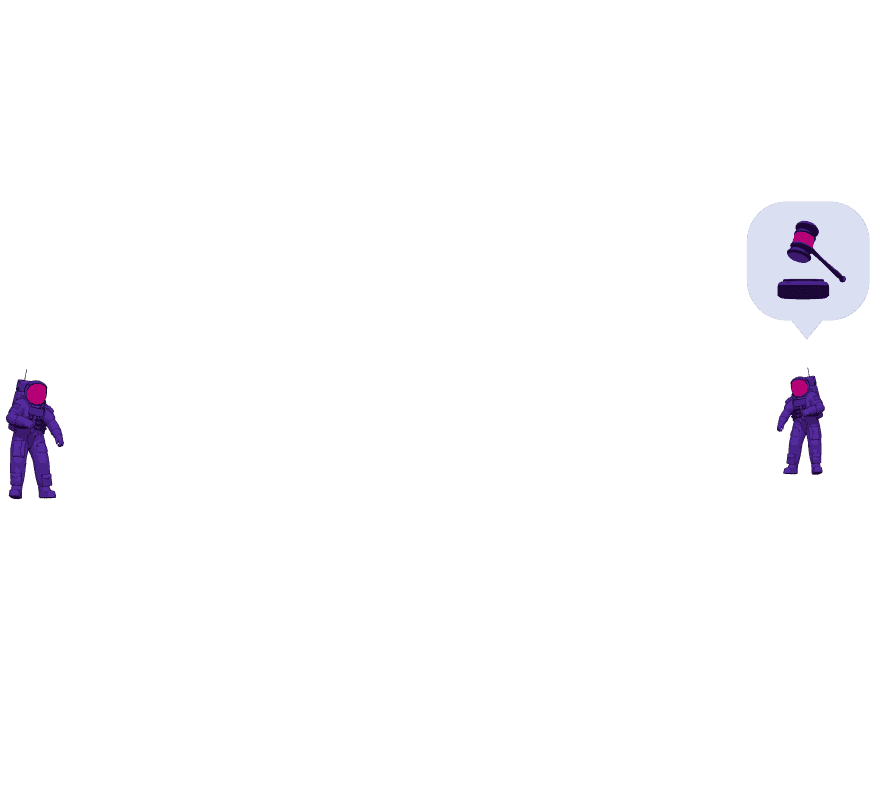
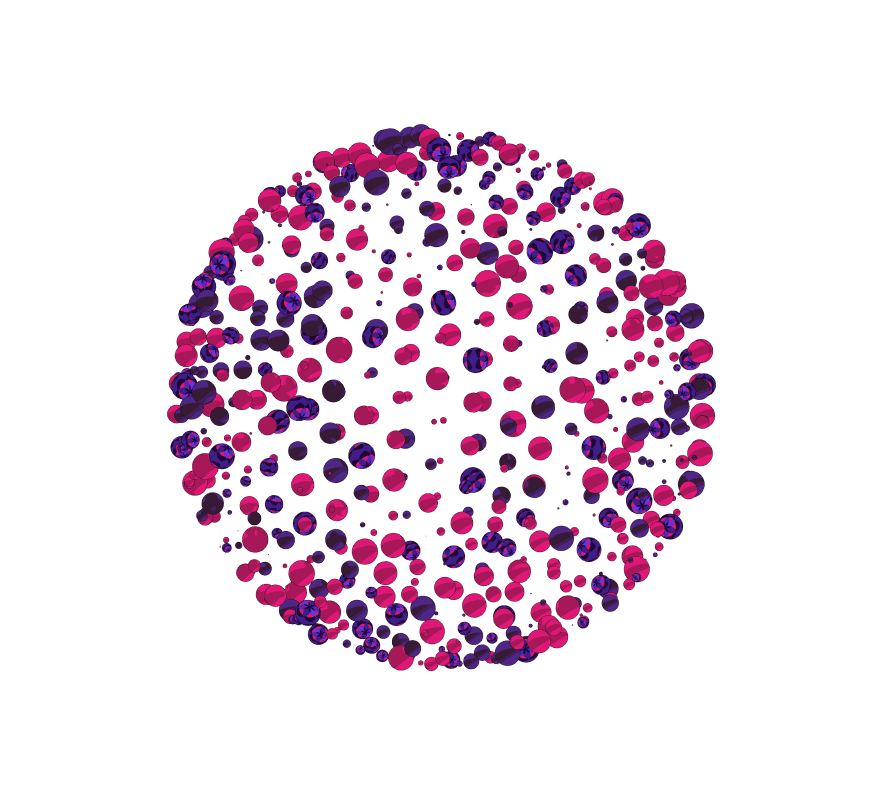




Welcome to Polkadot OpenGov
Introducing the first decentralized, unstoppable, open governance platform, Polkadot OpenGov, where the Polkadot community is in full control of the network.
Blockchain governance revolutionized
Decentralized
No first-class citizens
Automated enactment eliminates human involvement. Instead, DOT holders handle all network operations.
Fast
No queues
Multiple referenda can run simultaneously, meaning decisions can be taken faster, without compromising security.
Open
No power struggle
Agile vote delegation drives participation, while conviction voting levels the playing field for those with fewer tokens.
Future-Facing
No hard forks
Polkadot and connected parachains upgrade seamlessly to always stay up to date.
Who’s in charge?
Every time software is updated or budgets are allocated, decision-making groups must coordinate, and this is the role of governance.

Decentralization also means decision-making
Distributing nodes is an essential component of decentralization, eliminating gatekeepers and middlemen from the decision making process is the driving force behind blockchain.
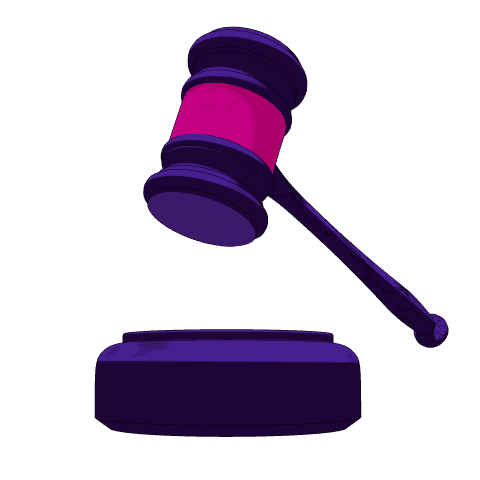
Running a blockchain should not require a CEO
A blockchain isn't truly decentralized if only one authority or group makes decisions it’s just like any other conventional corporation. However, in most cases, the centralized model prevails - when a select group determines the course of action.

Restoring trust in governance
The frequency of Blockchain access outages, wallet freezes, development delays, hard forks, and bankruptcies of cryptocurrency exchanges illustrate the dangers of centralized decision-making.

Gavin Wood
Polkadot and all the parachains are inherently upgradeable. But in order to come to a decision about what should be changed, we need a decision-making process. This is governance.
What is important for good blockchain governance?
No First-Class Citizens
A community can manage and coordinate a decisions about how to develop and fund a project, With Polkadot's on-chain referendum process, anyone holding DOT tokens can govern Polkadot, from deciding large and small changes to the network to its Treasury expenditures.
Staying Relevant
A blockchain needs frequent updates to remain relevant, effective, and secure - just like other software. On Polkadot, decisions are automatically enacted, making itself and its parachains inherently upgradable.
Funding
A proper organisation does not only decide on software upgrades, but also allocates funding. With Polkadot's on-chain treasury, DOT holders can request tokens to support projects that benefit Polkadot.
Efficiency
To encourage timely and regular decision making, governance should be so frictionless, and be enacted with ease.
Polkadot's unique governance mechanism allows multiple referenda to run simultaneously, meaning decisions can be taken faster, and efficiently through automatic enactments.
When no one is in control here, how are decisions made?
Members of the Polkadot DAO make them.
Only the protocol’s community should be able to start and vote on proposals, and if they are approved, they should be enacted automatically. All DOT holders are members of the Polkadot DAO, a collective charged with making decisions for the network.

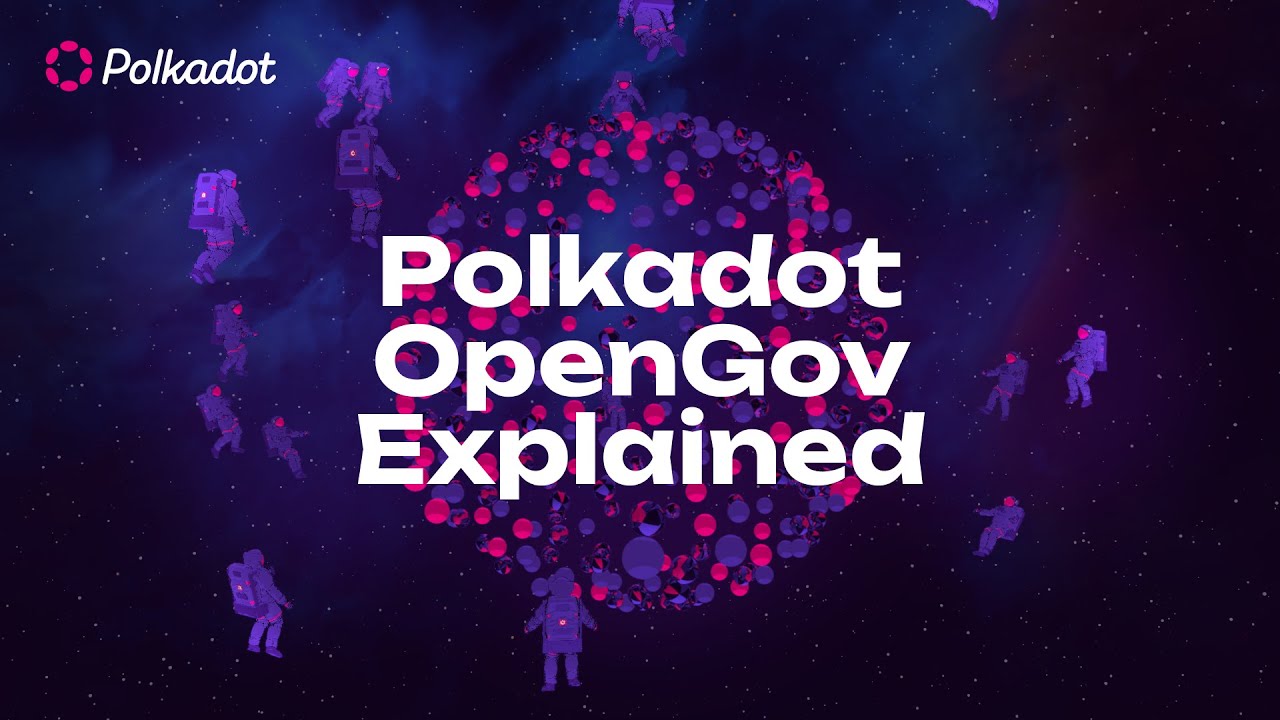
Through full autonomy and upgradability, Polkadot is ready, whatever the future brings
Upgradeable
With Polkadot, decisions can be automatically enacted, which makes upgrades to Polkadot, its parachains, even the governance model itself, adaptable to changing conditions indefinitely - a unique proposition for Web3.
Independent
On Polkadot, decisions are made by the community, not by centralized bodies or first-class citizens. While tokens can be freely acquired, the initial allocation was designed so no single investor controls a large portion.
Unstoppable
By giving decision-making power to a decentralized community, Polkadot delivers another “first” in Web3: it cannot be stopped (even by its creators).
Introducing
Polkadot OpenGov
Community-driven governance with no central authority
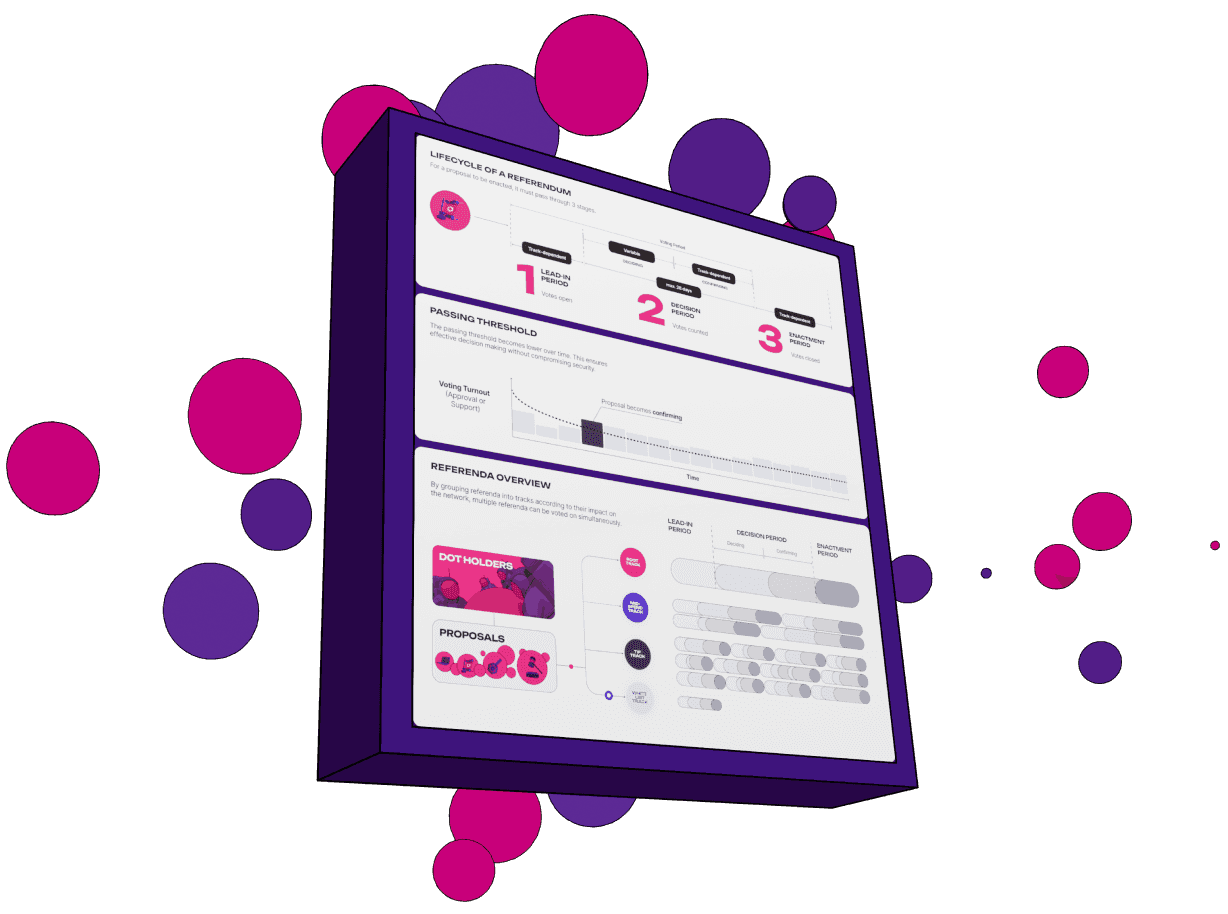
Polkadot in the hands of the community
No whales run Polkadot OpenGov. It’s fully autonomous. There will be just one group of network participants, DOT token holders, in which an expert body, the Polkadot Fellowship, is embedded.

All decisions are made by DOT Holders.
The Polkadot Fellowship is an embedded technical expert body, to which every DOT holder can get elected.
The Fellowship has no hard power over the network. It can declare certain proposals as safe, malicious, or time critical and can therefore facilitate quicker bug fixes, or identify malicious ones.
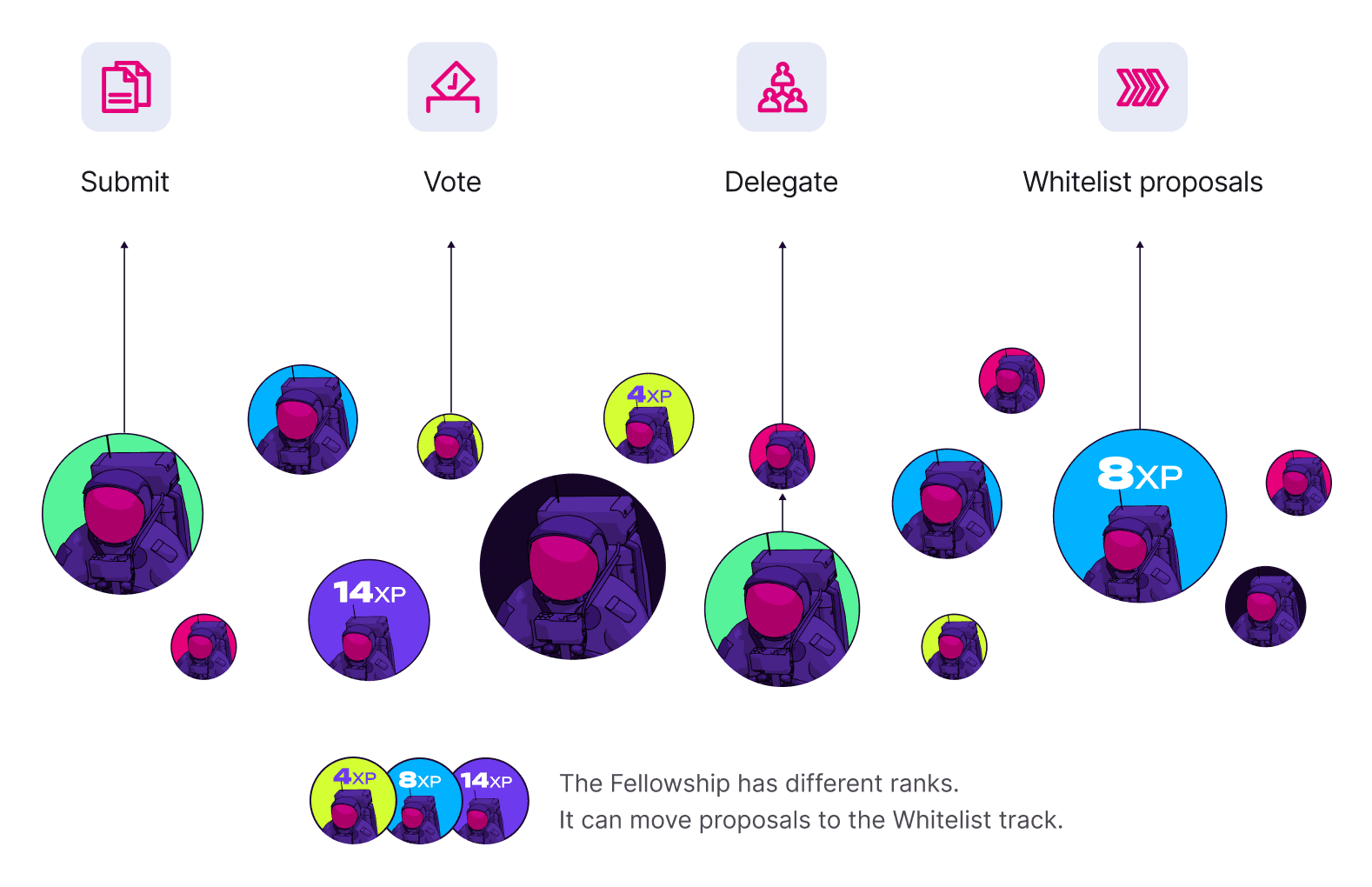
How decisions are made with Polkadot OpenGov
Polkadot OpenGov is designed to be flexible and adaptable, allowing for changes to be made quickly and efficiently. Additionally, it’s designed to be secure and resistant to manipulation, to ensure that the decisions made by the community are legitimate and transparent.

Lead-in period: Where proposals are submitted and referenda begin
Once a proposal is discussed with the community and feedback taken in, it can be submitted. Right now, these votes can be counted and approved, however, votes only start to count after a ‘lead-in’ period, which acts as a failsafe, and a decision deposit is paid.
Decision period: Now the real action takes place
Where the voting starts to really matter, the referendum is now eligible to be approved to be enacted. If the referenda meet the passing criteria for community ‘approval’ (positive votes) and ‘support’ (positive votes compared to the total number of possible votes), it passes from deciding to confirming. Depending on its track, the referenda needs to stay confirming for a fixed amount of time before it is approved.
Enactment period: Before an idea is brought to life
If a proposal is accepted, it is executed after the Enactment period has passed. This acts as another failsafe measure.
What determines whether a referendum is enacted?
If a proposal meets approval and support requirements, it moves to confirming phase. The referendum must meet both criteria for a set amount of time for it to be confirmed. After another fixed time has passed, it is enacted.
The number of positive votes as a proportion of the total number of votes cast taking into account conviction.
The total number of votes in approval (i.e. ignoring any adjustment for conviction) compared to the total possible number of votes that could be made in the system.

Participate in Polkadot Governance
There are different ways to experience Polkadot's governance
Use Polkadot OpenGov for your Web3 project
Adapt and integrate Polkadot OpenGov for your chain
All chains linked to the Polkadot Relay Chain will be able to benefit from OpenGov.
Create on-chain collectives or DAOs
With Polkadot OpenGov as your governance design.
Form an interest group
To make joint governance decisions on Polkadot.